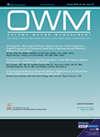Outcomes of a Quality Improvement Program to Reduce Hospital-acquired Pressure Ulcers in Pediatric Patients.
Q2 Nursing
引用次数: 13
Abstract
Hospital-acquired pressure injuries (PIs) present a significant challenge to pediatric providers. PURPOSE The purpose of this quality improvement program was to develop and implement a debrief protocol and to evaluate compliance with and the implementation of a comprehensive prevention bundle to decrease the overall incidence and severity of pediatric pressure ulcers (PUs)/PIs in a free-standing children's hospital. METHODS As a member of the Children's Hospitals Solution for Patients Safety national network, a PU Hospital Acquired Conditions (HAC) team was created in 2013, followed by the development and implementation of a PU occurrence debrief tool and discussion guide and implementation of multiple staff educational strategies and a comprehensive prevention bundle. The PU occurrence debriefing occurred within 24 to 48 hours of a PU. Incidence data were collected annually from 2014 until 2017. RESULTS Compliance on implementation and documentation of bundle elements ranged from 88% to 94%, and PU/PI incidence decreased by 30% from 2014 to 2016 and by 40% in 2017. The overall PU rate was 0.0057 in 2014, 0.0050 in 2015, 0.0036 in 2016, and 0.0023 in 2017; 65% of all PUs were device-related. Of those, >50% were related to respiratory devices, 25% to peripheral intravenous catheters/central lines, 10% to tracheostomies, and 15% to other devices. Respiratory device-related PUs decreased by 50% in the pediatric intensive care unit, by 80% in the neonatal unit, and eliminated completely in extracorporeal membrane oxygenation patients. CONCLUSION The debriefing process, debriefing tool, educational programs, and prevention bundle reduced the rate of hospital-acquired PIs in pediatric patients and propagated a culture of safety.减少儿科患者医院获得性压疮的质量改进计划的结果。
医院获得性压力损伤(PI)对儿科提供者提出了重大挑战。目的:该质量改进计划的目的是制定和实施一项汇报方案,并评估综合预防包的合规性和实施情况,以降低独立儿童医院儿科压疮(PU)/PI的总体发病率和严重程度。方法作为儿童医院患者安全解决方案国家网络的成员,2013年成立了PU医院获得性疾病(HAC)团队,随后开发和实施了PU发生情况汇报工具和讨论指南,并实施了多个员工教育策略和综合预防包。PU发生情况汇报发生在PU发生后24至48小时内。从2014年到2017年,每年收集一次发病率数据。RESULTS在束元素的实施和文件记录方面的依从性从88%到94%不等,PU/PI发病率从2014年至2016年下降了30%,2017年下降了40%。2014年PU总比率为0.0057,2015年为0.0050,2016年为0.0036,2017年为0.0023;65%的PU与设备相关。其中,50%以上与呼吸设备有关,25%与外周静脉导管/中心线有关,10%与气管造口有关,15%与其他设备有关。儿科重症监护室的呼吸装置相关PUs减少了50%,新生儿病房减少了80%,体外膜肺氧合患者的PUs完全消除。结论汇报过程、汇报工具、教育计划和预防包降低了儿科患者医院获得性PIs的发生率,并传播了一种安全文化。
本文章由计算机程序翻译,如有差异,请以英文原文为准。
求助全文
约1分钟内获得全文
求助全文
来源期刊

Ostomy Wound Management
医学-外科
CiteScore
0.99
自引率
0.00%
发文量
0
审稿时长
>12 weeks
期刊介绍:
Ostomy/Wound Management was founded in March of 1980 as "Ostomy Management." In 1985, this small journal dramatically expanded its content and readership by embracing the overlapping disciplines of ostomy care, wound care, incontinence care, and related skin and nutritional issues and became the premier journal of its kind. Ostomy/Wound Managements" readers include healthcare professionals from multiple disciplines. Today, our readers benefit from contemporary and comprehensive review and research papers that are practical, clinically oriented, and cutting edge. Each published article undergoes a rigorous double-blind peer review by members of both the Editorial Advisory Board and the Ad-Hoc Peer Review Panel.
 求助内容:
求助内容: 应助结果提醒方式:
应助结果提醒方式:


